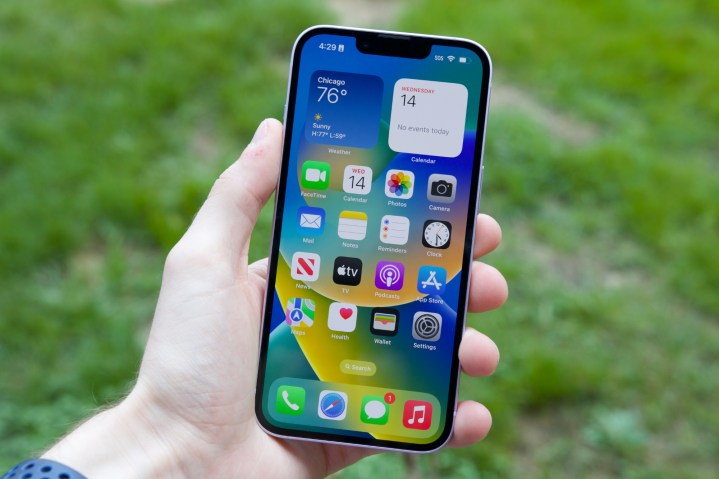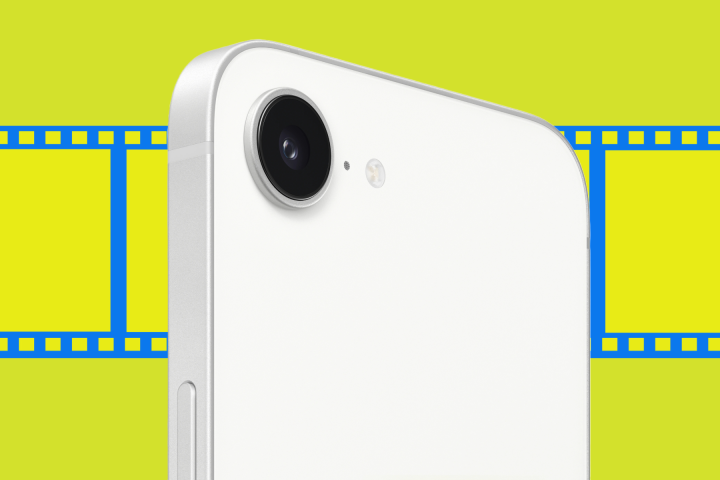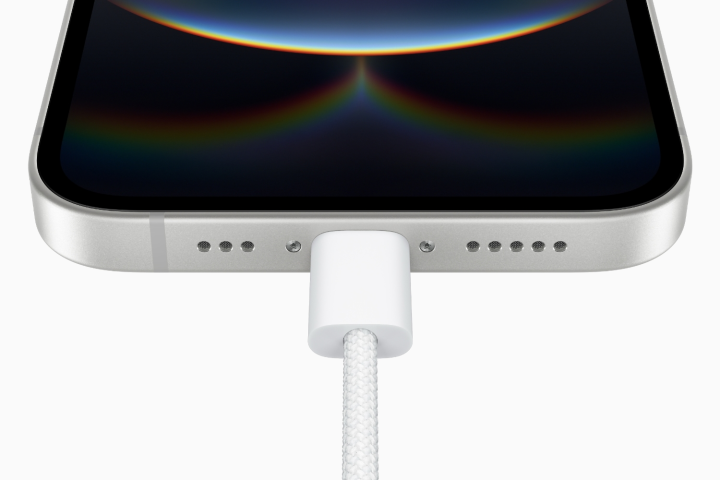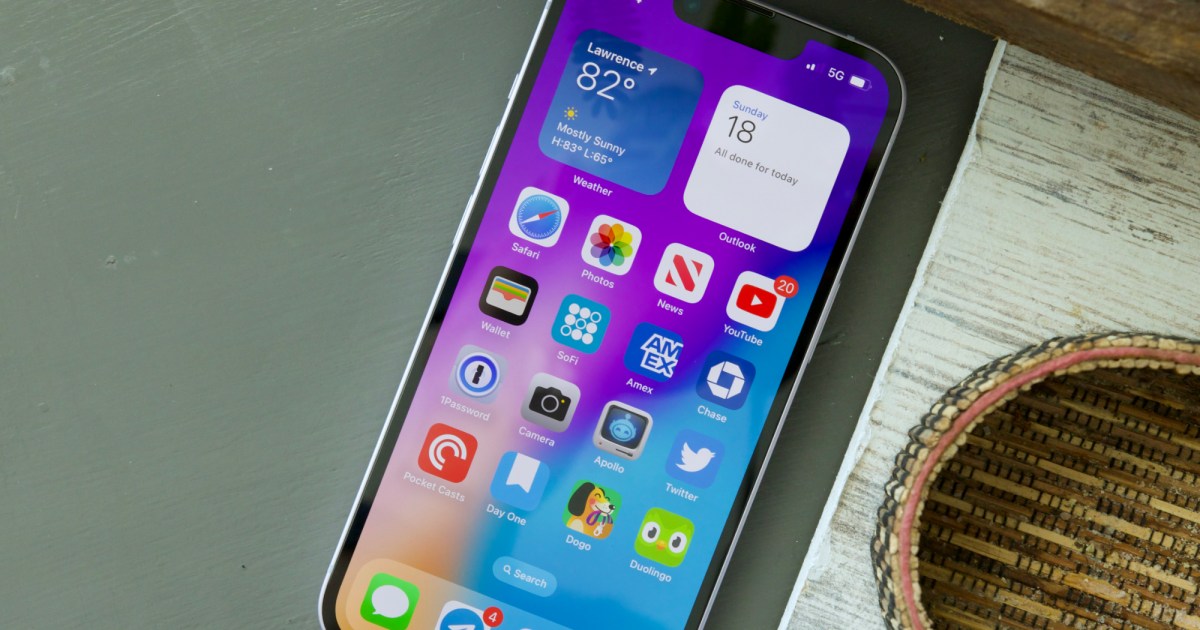Apple has just an entirely new device, the iPhone 16e. For those of us expecting a new budget iPhone SE, this has come as a big surprise. Apple’s new midrange handset combines the iPhone 14‘s looks with the iPhone 16’s power and Apple Intelligence, and it sits comfortably in the place the iPhone 14 once sat. How does it compare to the phone it’s replaced, and is it worth your hard-earned cash?
In this piece, we’ll compare the Apple iPhone 16e to the iPhone 14 to see which of these two devices is the better buy, from battery and charging, to performance and cameras. It’s admittedly still early days where the 16e is concerned, but there’s still a lot to discuss, and we’ll be sure to highlight when we need more information to make a final decision.
Apple iPhone 16e vs. iPhone 14: specs
| iPhone 16e | iPhone 14 | |
| Dimensions | 146.7 x 71.5 x 7.8mm (5.78 x 2.82 x 0.31 inches) | 146.7 x 71.5 x 7.8mm (5.78 x 2.82 x 0.31 inches) |
| Weight | 167 grams (5.89 ounces) | 172 grams (6.07 ounces) |
| Display | 6.1-inch Super Retina XDR OLED
2532 x 1170 resolution at 457 ppi 800 nits typical brightness 1200 nits peak HDR brightness |
6.1-inch Super Retina XDR OLED
2532 x 1170 resolution at 460 ppi 800 nits typical brightness 1200 nits peak HDR brightness |
| Colors | Black
White |
Blue
Purple Yellow Black Starlight PRODUCT(RED) |
| Processor | A18 | A15 |
| RAM | 8GB | 6GB |
| Storage | 128GB, 256GB, 512GB | 128GB, 256GB, 512GB |
| Software | iOS 18 | iOS 16 |
| Support | Minimum 5 years | Minimum 5 years |
| Apple Intelligence | Yes | No |
| Rear camera | 48MP main | 12MP main, f/1.5
12MP ultrawide, f/2.4 .5x, 1x optical zoom options |
| Front camera | 12MP TrueDepth | 12MP, f/1.9 |
| Battery | TBC | 3,279 mAh |
| Charging | USB-C, 20W (50% in 30 minutes)
7.5W wireless charging |
Lightning, 27W (50% in 30 minutes)
15W MagSafe charging 15W Qi wireless charging |
| Price | From $599 | From $599 |
| Review | iPhone 16e | iPhone 14 review |
Apple iPhone 16e vs. iPhone 14: design and display

If you think the iPhone 16e looks similar to the iPhone 14, well, that’s because it does. The iPhone 16e uses a modified version of the iPhone 14’s body, with the camera module having been altered to fit a single lens, the mute switch removed and replaced with the Action Button, and of course, the 14’s Lightning port replaced with a USB-C port. In our iPhone 14 review, we praised its comfortable-in-hand design and aerospace-grade aluminum frame that keeps fingerprints at bay. It’s a sturdy yet lightweight handset, and so expect the iPhone 16e to mirror these positives.
These similarities extend to durability as well, as both sport an IP68-rating for dust and water-resistance. This means both will be able survive an accidental dunk in the pool or bath; just don’t go out of your way to keep them in the water, as this is best thought of as insurance, rather than a feature.
Both of these phones also have 6.1-inch OLED displays. OLED displays have better contrast and deeper, richer blacks than LCD screens, so all of Apple’s phones now using this tech is a huge upgrade. It also means the end of Touch ID on iPhones, with Face ID now the only option. The 6.1-inch OLED display is protected by Apple’s Ceramic Shield. There’s no Dynamic Island here, as both phones use the older notched display. The display boasts a 2532 x 1170 resolution, with HDR support and 800 nits max typical brightness. Colors are punchy and everything from apps to YouTube videos looks great even in direct sunlight.

Where both disappoint is its 60Hz refresh rate, which makes scrolling and swiping look choppier than on Pro models, which benefit from a 120Hz refresh rate. This sort of budget display tech is disappointing on such an expensive handset, as you’ll find 120Hz refresh rates on even budget Android phones. Another disappointing note is the lack of an always-on display, which is a more and more surprising omission with each passing year.
While there are differences, if you like the look of one of these phones, you’re likely to like the other as well. They’re basically the same. Well, except for one area; colorways. The iPhone 14 has a choice of six colors, whereas the iPhone 16e only comes in two. Black and white. Still, even with this in mind, this is a draw.
Winner: Tie
Apple iPhone 16e vs. iPhone 14: performance

Under the iPhone 16e’s hood, you’ll find the A18 chip — the same processor as the iPhone 16, which, along with 8GB of RAM, enables Apple Intelligence for the new device. Features are likely to be more limited than with Apple’s flagship models, and we’ll need to spend time with the handset to assess its performance, but we’ll update once we know more. It’s also the first Apple device to use Apple’s own modem, the C1 modem. The iPhone 16e has 8GB of RAM, the minimum requirement for an Apple device running its AI stack. Storage starts at 128GB and there are also 256GB and 512GB storage variants.
The iPhone 14 has Apple’s A15 Bionic chip. It’s the same chip as the iPhone 13 Pro, just a slightly more powerful version. In our review, apps ran without a hitch, and gaming frame rate and graphics were great, even with demanding titles like Call of Duty: Mobile. The phone packs improved thermal design which dissipates heat more efficiently than the iPhone 13, and we only noticed it getting hot once, after over 30 minutes of updating CoD: Mobile with the display on.
It’s not really hard to call this one. The iPhone 16e has similar specs to the iPhone 14, and a much more powerful processor. It wins here.
Winner: Apple iPhone 16e
Apple iPhone 16e vs. iPhone 14: cameras

The iPhone 16e sticks to the now-defunct iPhone SE’s single rear camera format, with a 48-megapixel main rear shooter — the same as the iPhone 16 — and a 12-megapixel front-facing camera with FaceID. The 48-megapixel snapper is Apple’s Fusion Camera, a huge leap compared to the existing iPhone SE’s 12-megapixel offering. Users will be able to capture more detailed 24MP as well as full-res 48MP shots, alongside binned 12MP capture. That sensor upgrade also enables 2x zoom output in 12MP telephoto mode, atop the same sensor. The iPhone 16e also packs updates such as Smart HDR 5, improved portraits, photographic styles, and advanced video recording facilities.
With Apple Intelligence, you get access to an array of tools such as Clean Up, Apple’s take on Google’s Magic Eraser, which lets you remove unwanted people or objects from the background of your photos.
The iPhone 14 has a dual rear camera array, with a 12MP main camera and a 12MP ultrawide lens. There are slight improvements over the iPhone 13, with the main camera boasting a larger sensor and wider aperture for better shots in lowlight conditions, though there’s no telephoto zoom here.

Photos snapped with the main sensor are gorgeous in good lighting, with true-to-life, vibrant colors, and plenty of fine details. Lowlight images are mostly good though the camera switches to Night mode in extremely dark environments, with details becoming softer. The 12MP front-facing camera has a larger f/1.9 aperture compared to its predecessor, which gives good results even in dark environments, while autofocus helps details look sharper. You also get Photographic Styles to adjust the look of your photos, though you can’t change the style used on a photo after it’s taken.
This is a tough category to judge, as we haven’t had much time with the iPhone 16e yet. However, we currently suspect the upgraded main camera will eclipse the additional ultrawide-angle lens on the iPhone 14.
Winner: Apple iPhone 16e
Apple iPhone 16e vs. iPhone 14: battery and charging

Being the same size, it’s fair to assume the iPhone 16e has the same 3,279mAh battery as the iPhone 14 — though that hasn’t confirmed yet. Assuming it’ll last about the same amount of time as the iPhone 14 is reasonable, though Apple’s estimates give the 16e a longer lifespan. This could be down to the more efficient A18 processor, but we will have to wait and see how it performs.
During our review, the iPhone 14 got 14 hours of uptime including over 5.5 hours of screen-on time with around 25% battery left. That includes around 30 minutes of CoD: Mobile, and around an hour of YouTube, alongside using countless other apps. Lighter days without gaming, with around four hours of screen-on time and over 15 hours of use saw around 38% left in the tank. It’s a solid one-day battery, and perfectly reasonable.

The iPhone 16e now has a USB-C port for charging, bringing it in line with the iPhone 15. The iPhone 14, on the other hand, was the last phone in Apple’s lineup to use the proprietary Lightning connector, before the switch to USB-C connectivity with the iPhone 15.
Charging the iPhone 14 to 50% takes around 30 minutes, thanks to 25W wired charging, there’s 7.5W Qi wireless charging, and 15W MagSafe charging — but no reverse wireless charging. Oddly, the iPhone 16e takes a backwards step in this area, seemingly being capped at 20W fast charging, dropping wireless charge speeds to 7.5W, and baffingly, dropping MagSafe support entirely.
It’s hard to call this one without time with the iPhone 16e. However, the drop in charging speeds and loss of MagSafe support is a tough one to sell, and we’re disappointed by it. The iPhone 14 wins here.
Winner: Apple iPhone 14
Apple iPhone 16e vs. iPhone 14: software and updates

The iPhone 14 ships with iOS 16 out of the box. This can be updated to iOS 18, but it’s important to note the device won’t fully support all the features of the latest release. Apple Intelligence will only run on the iPhone 15 Pro and newer iPhones, so while you can enjoy iOS 18 features like Control Center customizations, a new photos app, and a new home screen, the iPhone 14 won’t see any Apple Intelligence features.
The iPhone 14 does include Emergency SOS via Satellite and Crash Detection. Emergency SOS lets you connect to satellites when you’re out of range of cellular or Wi-Fi signals and can share your location with a contact or get emergency services to your location. Crash Detection uses the device’s gyroscope and accelerometer to detect if you’ve been in a crash and can notify emergency contacts or auto-dial emergency services.
The iPhone 16e is built for Apple Intelligence, running iOS 18 out of the box, so if AI is a priority for you, the least expensive iPhone has your back. And you get everything else the iPhone 14 gets, on top of access to AI.
Apple guarantees a minimum of five years worth of major iOS updates and security patches for both devices. That means the iPhone 14 should last through 2027, or slightly longer, while the iPhone 16e will continue receiving updates until around 2030 at a minimum.
Since the iPhone 16e will continue receiving updates until at least 2030 and it packs the latest Apple Intelligence features and iOS 18, it’s our clear winner here.
Winner: Apple iPhone 16e
Apple iPhone 16e vs. iPhone 14: price and availability
The Apple iPhone 16e comes with 64GB, 128GB, or 256GB of onboard storage. You can choose from two colors, black or white. Pricing starts from $599 for the 128GB variant. Pre-orders are now open at Apple, with the phone on general sale from February 28.
The iPhone 14 comes in six colors: blue, purple, yellow, black, Starlight, and PRODUCT (RED), and packs 128GB, 256GB, or 512GB of onboard storage. It is no longer available to buy from Apple, but you can still find it at other retailers. Prices start from $599 for the 128GB model and rising to $699 for the 256GB variant. The 512GB model currently costs from $899. You can also find it at Best Buy, Walmart, Amazon, and other major retailers.
Apple iPhone 16e vs. iPhone 14: verdict

Comparing these two devices is difficult, not least because one of the two hasn’t been reviewed yet. But also, they’re two very similar phones. If you’re in the market for the latest Apple chip, with Apple Intelligence and updates through 2030, the iPhone 16e is a clear winner. However, the differences really aren’t that huge, and the jump in processing power isn’t enough to notice on a day-by-day basis. Also, if you’re not that excited about what Apple Intelligence currently offers, then the iPhone 16e doesn’t have that much to offer that the iPhone 14 doesn’t do, and sometimes does better.
We’ll need to spend more time with the iPhone 16e to decide if it’s worth the asking price, but even at this early stage it’s very clear that the iPhone 16e isn’t a straight replacement for the iPhone 14. Despite the two phones looking very similar, this isn’t a simple case of Apple swapping the processor and calling it a day. Instead, the iPhone 16e is very much its own beast, with a lot to recommend it. Is the better of these two to buy right now? Absolutely, not least because it’s the only one of the two you can buy from Apple at the moment. But is it worth ditching your iPhone 14 to jump sideways to the iPhone 16e? That’s a harder call to make, and one we’re not comfortable making until we’ve reviewed it fully. At the moment though? Unless you’re really keen on experiencing Apple Intelligence, it’s not likely to be worthwhile.
